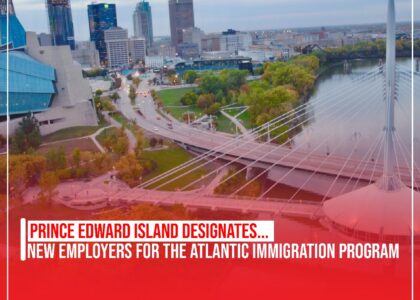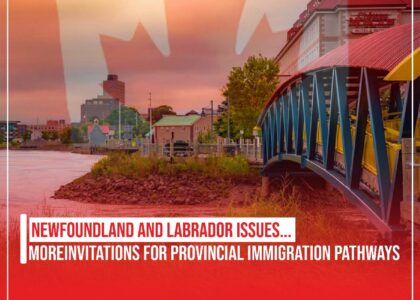In a major development, the Canadian government has unveiled new measures aimed at addressing critical labor shortages in the country’s construction sector. On March 7, 2025, Immigration Minister Marc Miller announced a series of changes designed to help meet the growing demand for skilled construction workers, which is crucial to tackling Canada’s ongoing housing crisis. These changes are part of Canada’s broader effort to enhance its immigration system, ensuring that the country can secure a stable, sustainable workforce for its construction industry.
Key Changes for the Construction Sector
The most significant changes that the Canadian immigration department has introduced are:
- Creation of a Pathway to Permanent Residence for Undocumented Construction Workers: The government will allocate up to 6,000 immigration spaces specifically for undocumented construction workers already working within Canada. This move will provide an opportunity for these workers to regularize their status and transition into permanent residency.
- Apprenticeship Programs Without the Need for Study Permits: Starting from March 7, 2025, qualified foreign workers will no longer need a study permit to participate in apprenticeship programs. This change removes a significant barrier for foreign nationals, making it easier for them to gain the necessary skills and qualifications to contribute to Canada’s construction industry.
Minister Marc Miller announced these changes during a press conference in Woodbridge, Ontario, highlighting the importance of attracting and retaining skilled construction workers from both domestic and international sources. The announcement is seen as a crucial step to ensuring the success of Canada’s construction industry and its ability to meet housing demands.
Addressing Canada’s Persistent Labor Shortages
Canada’s construction sector has long struggled with persistent labor shortages, which have been exacerbated by a booming housing market and growing infrastructure demands. The Canada Mortgage and Housing Corporation (CMHC) estimates that the country needs to build an additional 6 million homes by 2030 to address the growing housing affordability crisis. However, the shortage of skilled labor has severely hampered efforts to meet this demand.
Statistics Canada data shows that immigrants already play a key role in Canada’s construction industry, with approximately 23% of general contractors and residential builders being foreign-born. Despite this, there remains a significant gap in the number of skilled tradespeople required to meet Canada’s growing construction needs. Minister Miller pointed out that while efforts are being made to train workers domestically, the reality is that Canada is struggling to produce enough skilled tradespeople to keep up with demand, further underscoring the need for targeted immigration.
Why the New Pathway Matters
The new immigration pathway for construction workers will help Canada fill critical gaps in its labor market, particularly within the construction industry. The current immigration system’s pathways have not been sufficient to address the scale of demand for skilled workers, which is why these changes are so significant. By establishing a direct route to permanent residence for construction workers, Canada is ensuring that the sector can rely on a stable, long-term workforce, contributing not only to the economy but also to alleviating the housing supply shortage.
Also Read: Italy Golden Visa 2025: Requirements and Application Process for Investors
Expansion of Trade Occupations in Express Entry Pathway
As part of its ongoing efforts to address labor shortages in the construction industry, Canada has also made recent changes to the Express Entry system. On February 27, 2025, the government announced an expansion of the trade category under Express Entry, adding 19 new occupations to the list. These new additions include several construction-related roles such as:
- Construction Managers
- Construction Estimators
- Bricklayers
- Roofers and Shinglers
- Floor Covering Installers
- Painters and Decorators (excluding interior decorators)
This expansion ensures that more skilled workers from various construction trades will be eligible for permanent residence under the Express Entry program. These changes reflect Canada’s commitment to meeting the needs of its construction sector, which plays a central role in driving economic growth.
Previous Measures and Continuity for Out-of-Status Construction Workers
The federal government has also taken steps to address the status of undocumented construction workers. In January 2020, Canada introduced a temporary public policy for workers in the Greater Toronto Area (GTA) who had lost their work status. This policy, aimed at regularizing the status of out-of-status construction workers, has helped thousands of workers gain permanent residency in Canada. By the end of 2024, approximately 1,365 out-of-status construction workers, including their dependents, had received permanent residency under this initiative.
The new pathway announced in 2025 builds on the success of this earlier program. By providing up to 6,000 immigration spaces for undocumented workers, the government is creating more opportunities for those who have contributed to the sector but have not had the proper documentation to gain permanent residency.
Impact of Housing Concerns on Immigration
Housing issues have been a central focus of Canada’s immigration policies in recent years. The government’s 2025-2027 Immigration Levels Plan, which aims to reduce both permanent and temporary immigration levels, reflects the need to balance population growth with housing supply. Prime Minister Justin Trudeau and Minister Miller have cited housing supply concerns as one of the main reasons for this policy shift, which is intended to free up housing units by reducing the number of new arrivals.
The focus on “In-Canada” candidates, those already in the country with work experience, is part of a broader strategy to prioritize those who are already contributing to the workforce without adding additional strain on the housing market. In 2025, the government has set a target to admit 82,890 new permanent residents through this “In-Canada Focus” category, helping to address labor shortages without further exacerbating housing demands.
Looking Ahead: A Strategic Move for Canada’s Future
The Canadian government’s announcement of new pathways for construction workers is a crucial step in addressing the nation’s pressing housing and labor challenges. By focusing on attracting skilled foreign workers and providing pathways to permanent residence for those already in the country, Canada is laying the groundwork for a sustainable, long-term solution to its housing crisis.
As the construction sector continues to grow, the government’s actions to streamline the immigration process and support the integration of skilled workers will be essential in ensuring that Canada remains competitive in the global economy. These changes will not only help build the homes and infrastructure the country needs but also provide skilled workers with the opportunity to settle in Canada permanently, contributing to the nation’s growth for years to come.
For those interested in applying for permanent residency through the new construction worker pathway, it is important to stay updated on the latest information and requirements. Consulting with an experienced immigration consultant can help ensure that your application process is as smooth and successful as possible.
This blog post has been optimized for SEO with relevant keywords such as “Canada construction immigration,” “permanent residence for construction workers,” “skilled trades immigration,” and “apprenticeship programs in Canada.”





